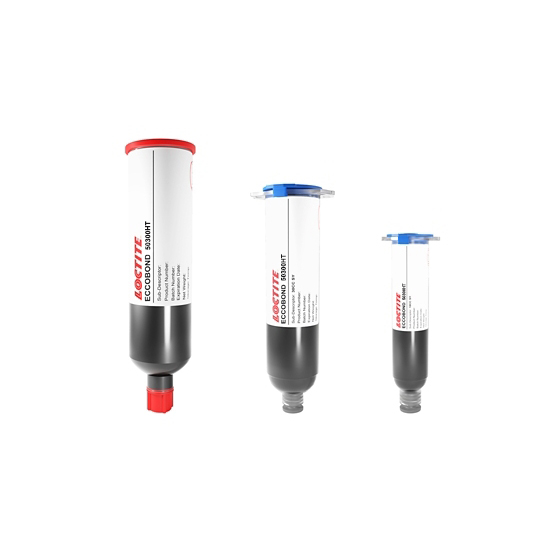LOCTITE ECCOBOND E1172A
- Void free Underfill
- Fast cure at low temperature
- Long pot life
Product Description
LOCTITE ECCOBOND E 1172 A monocomponent epoxy is formulated for use with very fine area array devices where SMT transparent processing is critical. This material can be used to under-fill devices with 25 micron geometries.
LOCTITE ECCOBOND E 1172 A provides a uniform and void-free underfill, maximizing the device's temperature cycling capability, distributing stress away from solder connects. It is a low CTE, non anhydride product with a long pot life. Thermal conductivity still needs TBD but it is around the 0.55 W/mK mark.
Cure Schedule
- 6 minutes @ 135°C
- 3 minutes @ 150°C
- 30 minutes @ 100 °C plus 5 minutes @ 135 °C (low stress)
Technical Specifications
| General Properties | |||||||||
| Pot Life Pot Life Pot life is the amount of time it takes for the viscosity of a material to double (or quadruple for lower viscosity materials) in room temperature after a material is mixed. It is closely related to work life but it is not application dependent, less precise and more of a general indication of how fast a system is going to cure. | 48 hours | ||||||||
| |||||||||
| Physical Properties | |||||||||
| Viscosity Viscosity Viscosity is a measurement of a fluid’s resistance to flow. Viscosity is commonly measured in centiPoise (cP). One cP is defined as the viscosity of water and all other viscosities are derived from this base. MPa is another common unit with a 1:1 conversion to cP. A product like honey would have a much higher viscosity -around 10,000 cPs- compared to water. As a result, honey would flow much slower out of a tipped glass than water would. The viscosity of a material can be decreased with an increase in temperature in order to better suit an application | 17,000 mPa.s | ||||||||
| Chemical Properties | |||||||||
| |||||||||
| Electrical Properties | |||||||||
| |||||||||
| Thermal Properties | |||||||||
| |||||||||
| Glass Transition Temperature (Tg) Glass Transition Temperature (Tg) The glass transition temperature for organic adhesives is a temperature region where the polymers change from glassy and brittle to soft and rubbery. Increasing the temperature further continues the softening process as the viscosity drops too. Temperatures between the glass transition temperature and below the decomposition point of the adhesive are the best region for bonding. The glass-transition temperature Tg of a material characterizes the range of temperatures over which this glass transition occurs. | 135 °C | ||||||||
Additional Information
Testing underfills for Reflow reliability
Here are some anecdotal results from one of our active projects. Please note that these are not official Henkel reliability results but customer outcomes.
We compared 3 Types of underfill with the following curing schedules:
- FP4531 30min@160°C
- UF1173 30min@100°C+30min@135°C
- E1172A 30min@100°C+30min@135°C
We prepared around 20 samples for each underfill. We exposed them to a the temperature profile of normal lead free reflow cycle and tested functionality to see after how many reflow cycles the samples start to fail.
- FP4531 failed after the first cycle.
- UF1173 failed after the 2nd cycle
- E1172 failed only after the 3rd cycle
| ||||||
| PASS | FAIL | PASS | FAIL | PASS | FAIL |
1. Oven run | 22 | 0 | 20 | 0 | 18 | 5 |
2. Oven run | 22 | 0 | 19 | 1 | - | - |
3. Oven run | 21 | 1 | - | - | - | - |
Does this make E 1172 the superior product and the other ones the inferior? Absolutely not.
These were tested under very specific customer conditions (note the different temperature of FP4531) and are just here to help you have a general outlook and some ballpark figures about these temperatures. These could turn on their heads if the process was different.
Do you have Outgassing properties for E1172A?
We do not have test data for outgassing on E1172A. However, we know that a related product with similar chemistry, E1173 has TML% = 0,43 and CVCM% = 0,02; so we are confident that E1172A can meet NASA/ESA outgassing requirements.



